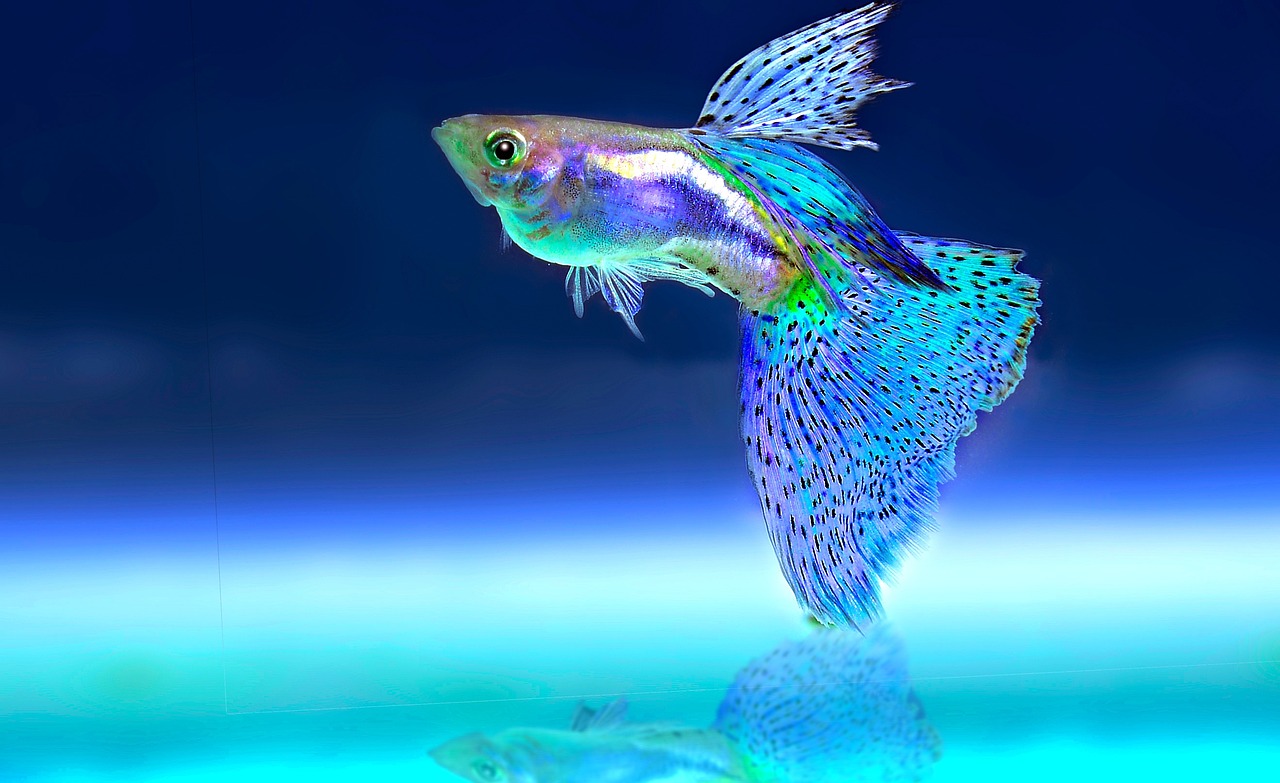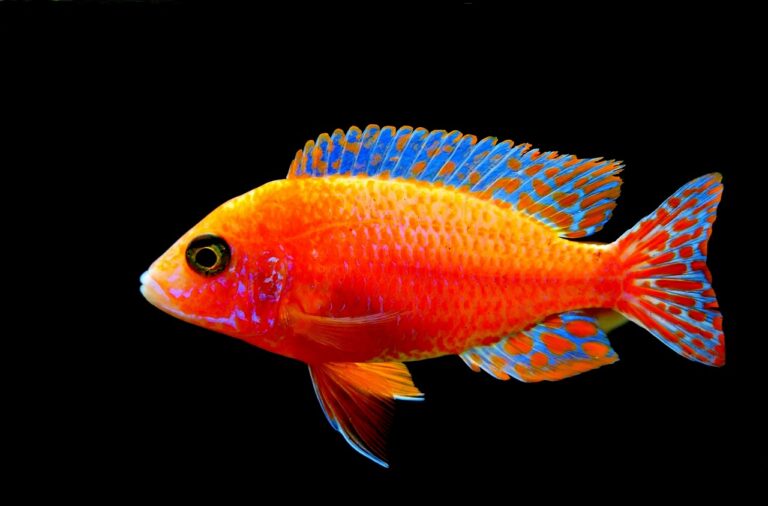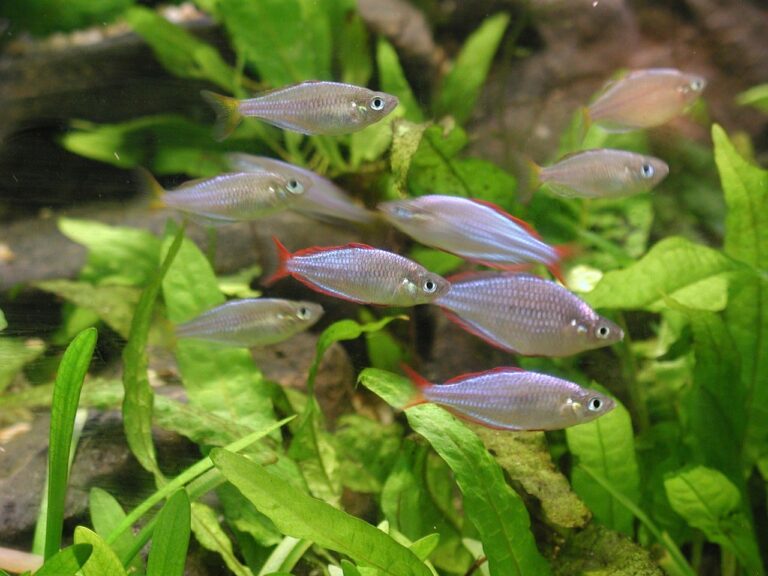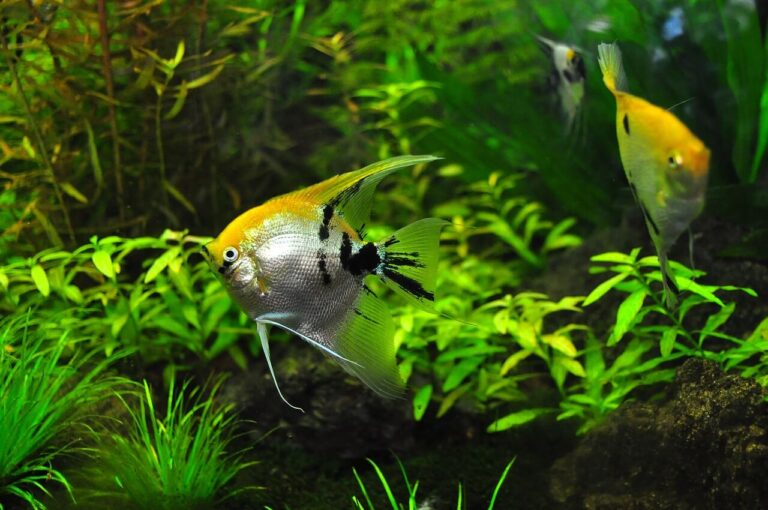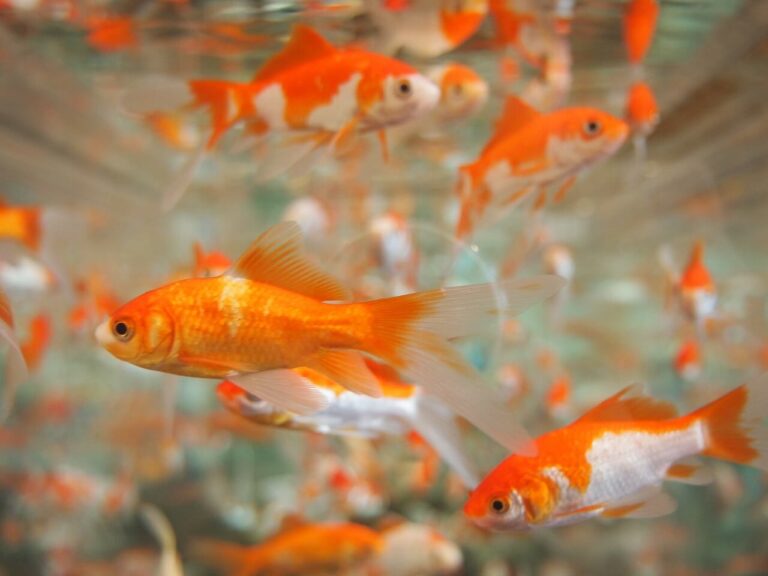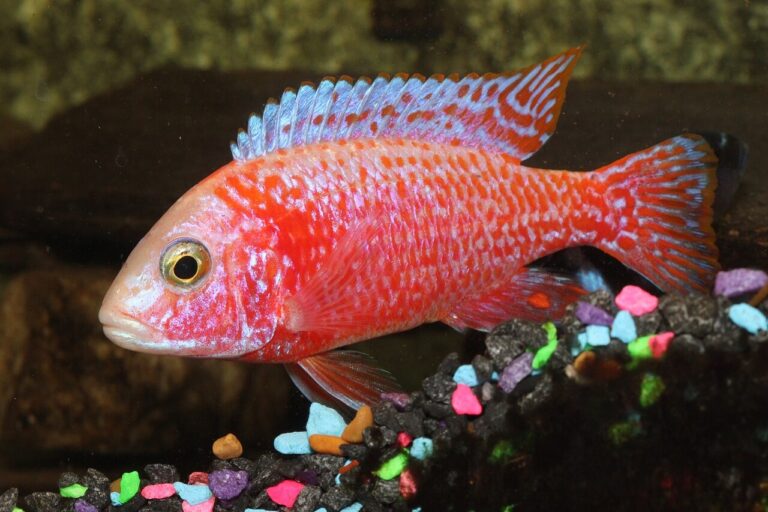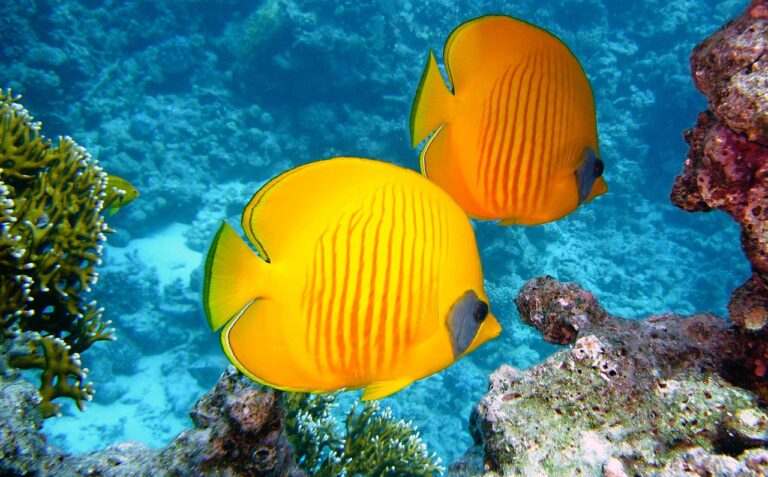How to select the perfect fish for your aquarium: a comprehensive guide
Having an aquarium can be a rewarding and relaxing hobby, but it’s important to choose the right fish to ensure the success and health of your aquatic community. From compatibility to size and water conditions, there are several factors to consider when selecting the perfect fish for your aquarium. In this blog post, we’ll provide tips and expert advice to help you make informed decisions when choosing the right fish for your tank. Whether you’re a beginner or an experienced aquarist, these guidelines will help you create a thriving and harmonious environment for your fish. So, let’s dive in and explore the key considerations for choosing the best fish for your aquarium.
There are several things to consider when choosing fish for an aquarium:
- Compatibility: Different species of fish have different requirements and behaviors, so it’s important to choose fish that are compatible with each other. For example, some fish are peaceful while others are more aggressive, so you’ll want to avoid mixing species that could potentially harm each other.
- Size: Make sure to choose fish that are appropriate for the size of your aquarium. Smaller fish need less space, while larger fish will require a larger tank.
- Water conditions: Different species of fish require different water conditions, such as pH, temperature, and hardness. Make sure to choose fish that are compatible with the water conditions in your aquarium.
- Diet: Some fish are herbivores, while others are carnivores. Make sure to choose fish that can be fed a diet that is appropriate for their nutritional needs.
- Expert advice: If you’re not sure which fish to choose, consider seeking the advice of a professional, such as a fish store owner or a veterinarian who specializes in fish care. They will be able to give you more specific recommendations based on your individual situation.
Compatibility
Compatibility is one of the most important factors to consider when choosing fish for an aquarium. Different species of fish have different requirements and behaviors, and it’s important to choose fish that are compatible with each other to ensure their well-being and to avoid potential conflicts. For example, some fish are peaceful while others are more aggressive, so you’ll want to avoid mixing species that could potentially harm each other.
One way to ensure compatibility is to choose fish that have similar temperament and personality. For example, if you’re looking for a peaceful community tank, you might choose a school of tetras or guppies. These fish are known for their peaceful nature and can be kept in a group without causing problems. On the other hand, if you’re looking for a more active tank, you might choose a species like mollies or danios that are more active swimmers and enjoy a more fast-paced environment.
Another aspect of compatibility to consider is the fish’s natural habitat and behavior. Fish that are native to the same region or have similar habitat preferences are more likely to be compatible. For example, fish that are native to the Amazon river basin tend to be compatible, as they are used to similar water conditions and have similar dietary needs.
Size
Compatibility also applies to different sizes of the fish. Large fish can eat smaller fish, so it’s important to avoid keeping large fish with small fish together, even if they are the same species.
It’s also important to note that some species are predatory and will eat smaller fish, and keeping them with other small fish will lead to their demise. When selecting fish, keep in mind the size of the fish and the potential predatory behaviors, to prevent any unfortunate accidents.
It’s important to research and consider all of these factors when choosing fish for your aquarium to ensure that they will be able to live together harmoniously. Always think about the fish’s natural habitat and behavior and consider their temperament and size. If unsure, seeking the advice of a professional, such as a fish store owner or a veterinarian who specializes in fish care can help.
When choosing fish for an aquarium, it’s important to select fish that are the appropriate size for the tank. Fish that are too large for the tank will not have enough space to swim comfortably, which can lead to stress and other health problems. Fish that are too small for the tank may be at risk of being bullied or even eaten by other fish.
To determine the appropriate size of fish for a given aquarium, you’ll need to consider the size of the tank itself, as well as the number of fish you plan to keep. A general rule of thumb is to allow about 1 gallon of water per inch of fish, but this will vary depending on the type of fish and the conditions of the tank.
When choosing fish that are appropriate for your tank size, you should consider the adult size of the fish, not the size they are when you purchase them. Smaller fish, such as Neon Tetra, Guppies, and Zebra Danios, are generally recommended for smaller tanks, while larger fish, such as Angel fish, Oscars, and Arowanas are better suited for larger tanks.
It’s also important to consider the bioload of the fish, which is the amount of waste and other materials produced by the fish. Larger fish produce more waste and require more oxygen than smaller fish, so they will need a larger tank to accommodate their needs.
When choosing fish, it’s also essential to be aware of their swimming habits. Fish like Bettas and Gouramis prefer to stay in one spot while others, like Barbs and Danios, are active swimmers and will require a larger area to swim.
In conclusion, choosing fish that are appropriately sized for your tank is essential for the health and well-being of your aquatic community. Make sure to consider the adult size of the fish, bioload, and swimming habits, and be mindful of the size of your tank before making your final decision. It’s also a good idea to get a tank size that’s a bit larger than what you think you need to allow room for growth, this will also make maintenance easier.
Water Conditions
Another important factor to consider when choosing fish for an aquarium is the compatibility of the fish’s water conditions with those of the tank. Different species of fish have different requirements for pH, temperature, and hardness, and it’s essential to choose fish that are compatible with the water conditions in your aquarium.
pH is a measure of the acidity or basicity of the water, and different species of fish have different pH preferences. For example, some fish require a neutral pH of 7.0, while others prefer a slightly acidic or basic environment. It’s important to research the pH requirements of the fish you’re considering and make sure that they match the conditions of your tank.
Temperature is another important factor to consider when choosing fish. Different species of fish have different temperature preferences, and it’s essential to choose fish that are compatible with the temperature range of your aquarium. Some tropical fish, for example, require a water temperature of around 78-82°F (25-28°C), while others may prefer a cooler environment.
Water hardness is also a critical factor when choosing fish. Hardness is a measure of the amount of dissolved minerals in the water. Fish have different preferences for water hardness, and it’s essential to choose fish that are compatible with the hardness of your aquarium. For example, some fish, like African Cichlids, require a harder water, while others, like Discus, prefer a softer water.
It’s also important to note that certain species of fish can tolerate a wide range of water conditions and will adapt well to different pH, temperature and hardness range. For example, a common fish, Neon Tetra, can tolerate a wide range of pH and temperature, which makes them a good choice for a community tank.
It’s always a good idea to test the water parameters before adding new fish to your tank, and make sure to match them with the fish’s requirements to ensure that they will be healthy in the tank. If you’re unsure about the water conditions in your tank or what a specific species of fish requires, it’s always a good idea to seek the advice of a professional, such as a fish store owner or a veterinarian who specializes in fish care.
Fish Diet
A fish’s diet is an important factor to consider when choosing fish for an aquarium. Different species of fish have different nutritional needs, and it’s essential to choose fish that can be fed a diet that is appropriate for their dietary requirements.
There are two main types of fish diets: herbivorous and carnivorous. Herbivorous fish, such as Plecos and Otocinclus, eat primarily plant-based foods, while carnivorous fish, such as Oscars and Cichlids, eat primarily meat-based foods. Some fish are also omnivorous, which means they eat a combination of plant and meat-based foods.
When selecting fish, make sure to research the dietary needs of the fish you’re considering, and make sure that you can provide them with a diet that meets those needs. It’s also important to note that certain species of fish may require a varied diet, for example, some species of cichlids and tangs need both vegetable and protein based foods to be healthy.
It’s also essential to consider the form of food, some fish prefer live food, like worms, while others prefer pellets or flakes. Some species may also require a combination of different forms of food. It’s important to research and select the form of food that the fish you’re considering require to maintain their health.
It’s also important to note that overfeeding can be just as harmful as underfeeding. Fish should be fed only as much as they can consume in 2-3 minutes, and any uneaten food should be removed. Overfeeding not only pollutes the water but also leads to an accumulation of excess fish waste that can lead to health problems.
In conclusion, choosing fish that can be fed a diet that is appropriate for their nutritional needs is essential for the health and well-being of your aquatic community. Make sure to research the dietary needs of the fish you’re considering and make sure that you can provide them with a diet that meets those needs. Remember to be mindful of overfeeding and remove uneaten food promptly. If you’re unsure about the dietary needs of a specific species of fish, it’s always a good idea to seek the advice of a professional, such as a fish store owner or a veterinarian who specializes in fish care.
Seek expert advice
Seeking the advice of experts is an important step in choosing the right fish for your aquarium. Fish store owners and veterinarians who specialize in fish care are often a great resource for getting accurate and specific information about the compatibility, size, water conditions, and diet of the fish you’re considering.
When visiting a fish store, be sure to ask questions about the fish you’re interested in, such as their size, temperament, water conditions, and diet. The store staff should be able to provide you with accurate and helpful information to help you make an informed decision.
Another expert to consider is a veterinarian who specializes in fish care. They can help you with information on any health concerns and conditions, and provide you with guidance on how to provide proper care and conditions for the fish you choose. They can also help you with developing a plan for quarantine and other health-related procedures for new fish, which is especially important for preventing the spread of diseases among your aquatic community.
When making your decision, it’s also essential to consider the level of experience you have with aquariums and fish. If you’re a new aquarist, it’s best to start with hardy and easy-to-care-for species such as Guppies, Platies or Neon Tetras. As you gain more experience, you can gradually add more challenging species to your tank.
In summary, seeking expert advice is a vital step in choosing the right fish for your aquarium. Fish store owners, veterinarians who specialize in fish care, and even experienced aquarists can provide valuable insights and information to help you make an informed decision. Don’t hesitate to ask questions, and always make sure to consider your own experience level when choosing fish for your aquarium.
- How many fish can I keep in my tank?
- It depends on the size of the tank and the specific species of fish you are considering. A general rule of thumb is to allow about 1 gallon of water per inch of fish, but this will vary depending on the type of fish and the conditions of the tank. It’s important to make sure that each fish has enough space to swim comfortably and that the bioload (waste and other materials produced by the fish) is not too high for the tank size.
- What are the best beginner fish for a new aquarium? Some popular beginner fish options include Neon Tetras, Guppies, Platies, and Zebra Danios, as they are hardy, easy to care for, and adaptable to a wide range of water conditions. They are also relatively inexpensive, which makes them a good choice for first-time fish owners.
- Can different species of fish live together in the same tank? Yes, different species of fish can live together in the same tank, but it’s important to make sure that they are compatible in terms of temperament, size, water conditions, and diet. It’s also important to research the natural habitat and behavior of the fish to ensure that they will be able to live together harmoniously.
- How do I know if a fish is compatible with the water conditions in my tank? You can determine if a fish is compatible with the water conditions in your tank by researching the specific pH, temperature, and hardness requirements of the fish. It’s also important to test the water conditions in your tank to ensure that they match the requirements of the fish you are considering.
- What should I feed my fish? The appropriate diet for your fish will depend on the species you are keeping. Some fish are herbivores and require mostly plant-based foods, while others are carnivores and require mostly meat-based foods. It’s important to research the dietary needs of the fish you are considering to ensure that you can provide them with a diet that meets their nutritional requirements.
- How often should I feed my fish? The appropriate feeding schedule and frequency will depend on the species you are keeping. Some fish require multiple small feedings throughout the day, while others can be fed once or twice a day. It’s important to research the specific
- icate that your fish are not healthy, such as lethargy, loss of appetite, difficulty swimming, abnormal coloring or spots, visible parasites or cloudy eyes. If you notice any of these signs, it’s important to seek the advice of a veterinarian who specializes in fish care to determine the cause of the problem and to get appropriate treatment.
- How can I prevent diseases in my fish tank? There are several steps you can take to prevent diseases in your fish tank, such as maintaining proper water conditions, providing a balanced diet, ensuring good water circulation and filtration, avoiding overcrowding, and quarantining new fish before introducing them to the main tank. It’s also important to regularly monitor the health of your fish and to seek the advice of a veterinarian who specializes in fish care if you notice any signs of disease.
- How do I know what size tank is appropriate for the fish I want to keep? When choosing a tank size for the fish
- Is it necessary to have a separate quarantine tank for new fish? A quarantine tank is not always necessary, but it is recommended as a best practice in order to ensure the health and well-being of your existing fish. A quarantine tank allows you to observe new fish for a period of time before introducing them to the main tank to ensure that they are healthy and not carrying any diseases that could spread to your existing fish.
- How can I tell if a fish is male or female? Differentiating the gender of fish can vary depending on the species. Some species have distinct physical characteristics that can be used to determine their gender, while others may have more subtle differences. In some cases, a veterinarian who specializes in fish care may be needed to correctly identify the gender of a fish.
- What should I do if one of my fish dies? If one of your fish dies, it’s important to remove it from the tank as soon as possible to prevent the spread of any diseases or parasites. It’s also important to perform a water test and to monitor the health of your remaining fish to ensure that they are not exhibiting any signs of illness. If you notice any signs of disease or multiple fish deaths, it’s recommended to seek the advice of a veterinarian who specializes in fish care.
- How often should I do water changes and how much water should I change? The frequency and amount of water changes will depend on the size of the tank, the number of fish, and the conditions of the tank. It’s generally recommended to perform a partial water change of about 10-20% of the tank water once a week. However, you should monitor the water parameters and adjust the frequency of water changes as needed.
- How can I improve the appearance of my aquarium? There are several ways to improve the appearance of an aquarium, such as adding live plants, different types of decorations, and different colored gravels. It’s also important to maintain proper water conditions and to keep the tank clean. Adding lighting and investing in a good filtration system can also help enhance the appearance of the aquarium.
- Are there any fish that are illegal to keep as pets? There are some species of fish that are protected by law and may not be kept as pets. Examples include certain species of sharks and rays, which are protected by the Convention on International Trade in Endangered Species of Wild Fauna and Flora (CITES). Before getting a fish, it’s important to research if there are any laws or regulations that apply to the specific species you are considering.
